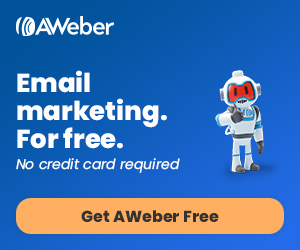Content marketing has evolved dramatically over the years, transforming from simple blog posts to an entire industry focused on creating immersive and personalized experiences for audiences. As digital technology advances, so do the strategies and techniques that marketers use to engage their target customers. In this article, we’ll explore the evolution of content marketing, key trends shaping its future, and actionable tactics that businesses can use to stay ahead in this ever-changing landscape.
The Evolution of Content Marketing
Content marketing has come a long way from its early days of simple newspaper ads and printed brochures. Here’s a brief look at how it has evolved over the decades:
- Early Days of Advertising (1900s – 1950s): The origins of content marketing can be traced back to traditional print ads, radio commercials, and television advertising. Brands like Jell-O and Coca-Cola were among the first to use storytelling and informative content in their marketing.
- Rise of Digital Content (1990s – 2000s): The internet’s emergence brought new opportunities for brands to reach their audiences through websites, email newsletters, and the early stages of SEO. During this time, businesses began to recognize the importance of providing valuable content online to attract visitors.
- The Blog Boom (2000s – 2010s): Blogging quickly became a fundamental component of content marketing strategies. Brands started using blogs to educate their audience, answer questions, and drive traffic to their websites. This era also saw the rise of social media platforms, which allowed companies to engage with their audiences on a more personal level.
- Visual and Interactive Content (2010s – Present): With the advent of platforms like Instagram, YouTube, and TikTok, visual content like videos, infographics, and interactive posts have gained immense popularity. Marketers are now focusing on creating more engaging and immersive experiences, taking advantage of new technologies like augmented reality (AR) and virtual reality (VR).
- Personalization and AI (Present and Beyond): Artificial intelligence and data analytics are revolutionizing content marketing by enabling hyper-personalization. AI-powered tools help marketers understand their audience’s preferences and deliver tailor-made content experiences, enhancing engagement and customer satisfaction.
Current Trends in Content Marketing
To remain competitive, businesses must adapt to the latest trends in content marketing. Here are some of the most influential trends that are shaping the future of content marketing:
- Video Content Dominance: Video remains one of the most engaging content formats. With platforms like YouTube, TikTok, and Instagram Reels, short-form video content is more popular than ever. Brands are investing heavily in video marketing to increase reach and connect with audiences on an emotional level.
- Content Personalization: Today’s consumers expect personalized experiences. Content personalization involves tailoring messages and offers based on a user’s behavior, preferences, and interactions with your brand. AI and machine learning technologies make it easier to deliver the right content to the right person at the right time.
- Voice Search Optimization: With the rise of voice-activated devices like Amazon’s Alexa, Google Home, and Apple’s Siri, optimizing content for voice search has become crucial. Marketers need to focus on creating conversational content and long-tail keywords to improve visibility in voice search results.
- Interactive Content: Interactive content, such as quizzes, polls, calculators, and interactive infographics, is gaining traction. It encourages active engagement from users, making the content more memorable and increasing the likelihood of social sharing.
- User-Generated Content (UGC): Consumers trust content created by other users more than brand-produced content. Encouraging customers to share their experiences, reviews, and stories related to your products helps build authenticity and trust in your brand.
- Ephemeral Content: Content that is temporary or disappears after a certain period, like Instagram Stories and Snapchat Snaps, has proven to be highly engaging. The fear of missing out (FOMO) drives users to engage quickly, making ephemeral content a valuable tool for real-time marketing.
- AI-Driven Content Creation: Artificial intelligence is increasingly being used to create content. AI tools can help generate blog posts, social media updates, and even video scripts. While AI content creation is still in its early stages, it offers significant potential for streamlining workflows and scaling content production.
Tactics for Successful Content Marketing
Adopting the right tactics is essential for creating a content marketing strategy that delivers results. Here are some actionable tactics to enhance your content marketing efforts:
- Create Evergreen Content: Evergreen content is content that remains relevant over a long period. It continues to attract traffic and engage readers long after it is published. Examples include how-to guides, industry resources, and educational articles.
- Use Data-Driven Insights: Leverage analytics and data to understand your audience’s preferences and behaviors. Use these insights to create targeted content that resonates with your audience’s needs and interests.
- Focus on Quality Over Quantity: In the race to produce more content, don’t sacrifice quality for quantity. High-quality content that provides real value to your audience is more likely to be shared, linked to, and ranked by search engines.
- Repurpose Content Across Channels: Maximize the reach of your content by repurposing it across different formats and channels. For example, turn a blog post into an infographic, a video, or a podcast episode to appeal to different audience segments.
- Build a Strong Social Media Presence: Social media platforms are essential for content distribution and engagement. Develop a robust social media strategy to promote your content, interact with your audience, and build a community around your brand.
- Collaborate with Influencers: Partnering with influencers in your industry can amplify your content’s reach. Influencers can introduce your brand to new audiences, increase credibility, and drive engagement with their authentic recommendations.
- Implement SEO Best Practices: Optimize your content for search engines by using relevant keywords, meta tags, and high-quality backlinks. SEO helps increase your content’s visibility, driving more organic traffic to your website.
The Future of Content Marketing
As technology continues to evolve, the future of content marketing looks promising and full of opportunities. Here are a few predictions for what’s next in content marketing:
- Greater Integration of AI and Automation: AI will play a larger role in content creation, personalization, and distribution. Automation tools will help marketers save time and resources while delivering highly targeted content to specific audience segments.
- Rise of Virtual and Augmented Reality Content: VR and AR technologies are opening up new possibilities for creating immersive content experiences. Brands will use these technologies to engage customers in more interactive and meaningful ways.
- Emphasis on Ethical and Inclusive Content: Consumers are becoming more conscious of brand values and ethics. Content that promotes inclusivity, diversity, and transparency will become increasingly important in building a loyal customer base.
- Content as a Service (CaaS): Companies will start offering content as a service, providing on-demand content solutions to other businesses. This trend will drive the growth of content marketplaces and subscription-based content models.
Conclusion
The landscape of content marketing is constantly changing, driven by technological advancements and evolving consumer preferences. To stay ahead, businesses must embrace new trends, adapt to changing customer behaviors, and continuously refine their strategies. By focusing on creating valuable, personalized, and engaging content, brands can build stronger connections with their audience, increase brand loyalty, and ultimately drive long-term success.
As content marketing continues to grow in importance, businesses should invest in innovative strategies that align with their audience’s needs and expectations. With the right approach, content marketing can become a powerful tool for achieving business goals in the digital age. This site may contain links to affiliate websites, and we receive an affiliate commission for any purchases made by you on the affiliate website using such links. Check Out Master Affiliate Profits Here: https://fredsmarketing.com/map



